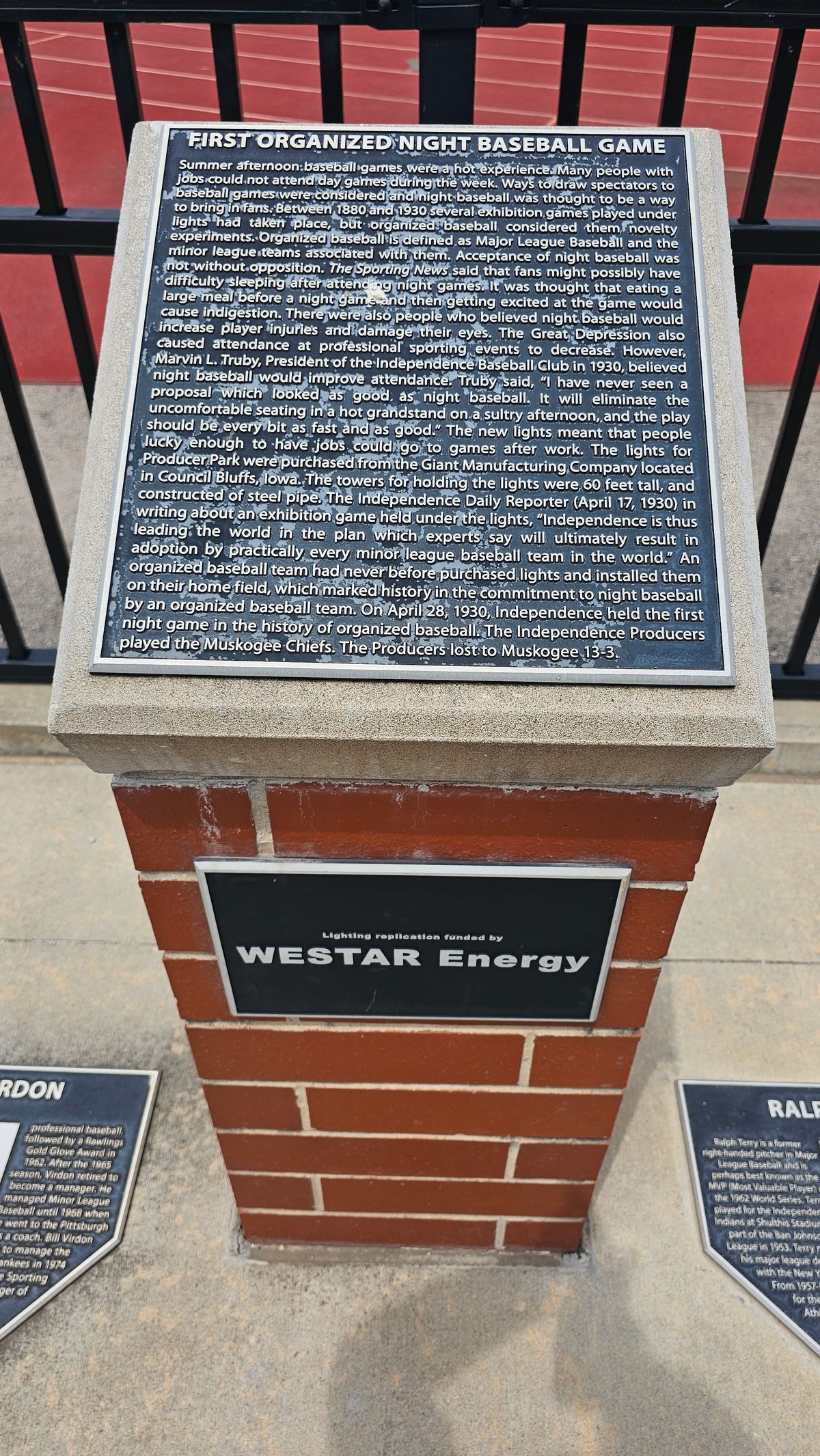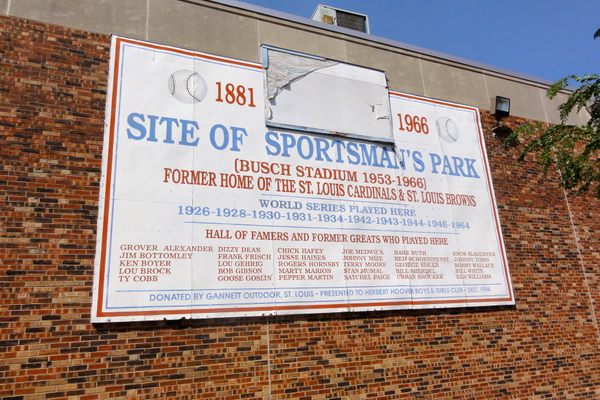About
If you’ve ever come home after a day of school or work to watch a ballgame, in part, you have the town of Independence, Kansas, to thank. It was here on April 28, 1930, that the first night game was played in the history of organized baseball.
It’s important to define "organized baseball," because night baseball had been taking place off and on since the sport's creation. The earliest known game of artificially illuminated baseball took place on September 2, 1880, at Nantasket Beach, Massachusetts. Exhibition games would regularly be played with artificial lighting, however, professional sports resisted the innovation–particularly all major and minor leagues covered by the National Agreement governed by Major League Baseball.
There were fears that night ball would lead to injury. The plaque at Emmot Field notes that The Sporting News fretted that fans, overcome by the excitement of baseball at night, would experience poor sleep and suffer from indigestion. However, many league owners disagreed, and exhibition games of nighttime baseball were growing more frequent.
Marvin L. Truby, owner of the local minor league team the Independence Producers of the Western Association, was a fervent believer that playing at night would make the game less hot and uncomfortable, prevent games from being called due to darkness, and most importantly, bring potential ticket buyers to the gate after work. Truby purchased light projectors from a company in Council Bluffs, Iowa, and mounted them on 60-foot tall pipe towers. On April 28, 1930, the lights were used for a night game between the Independence Producers and the Muskogee Chiefs. Muskogee won 13-3, but Truby was nevertheless thrilled.
Night baseball spread rapidly through the minors and majors, rejuvenating the minor leagues and leading to a boom in attendance. Shulthis Stadium, also known as Producers Park, would go on to be home to organized baseball for decades to come. In 1949, the stadium was the home of local ballplayer Mickey Mantle, who started his professional career with the Independence Yankees. Sadly, the historic stadium grandstand fell into disrepair, and it was demolished and replaced in 2015.
Today, the stadium is used for football. It is now named Emmot Field to honor Walter “Kayo” Emmot, a beloved high school football coach who at one point led Independence High School to a state record 49 consecutive victories. A statue memorializing the coach and “Kayo’s Boys” is located not far from the plaque honoring the first night ballgame.
Related Tags
Community Contributors
Added By
Published
September 8, 2023

























